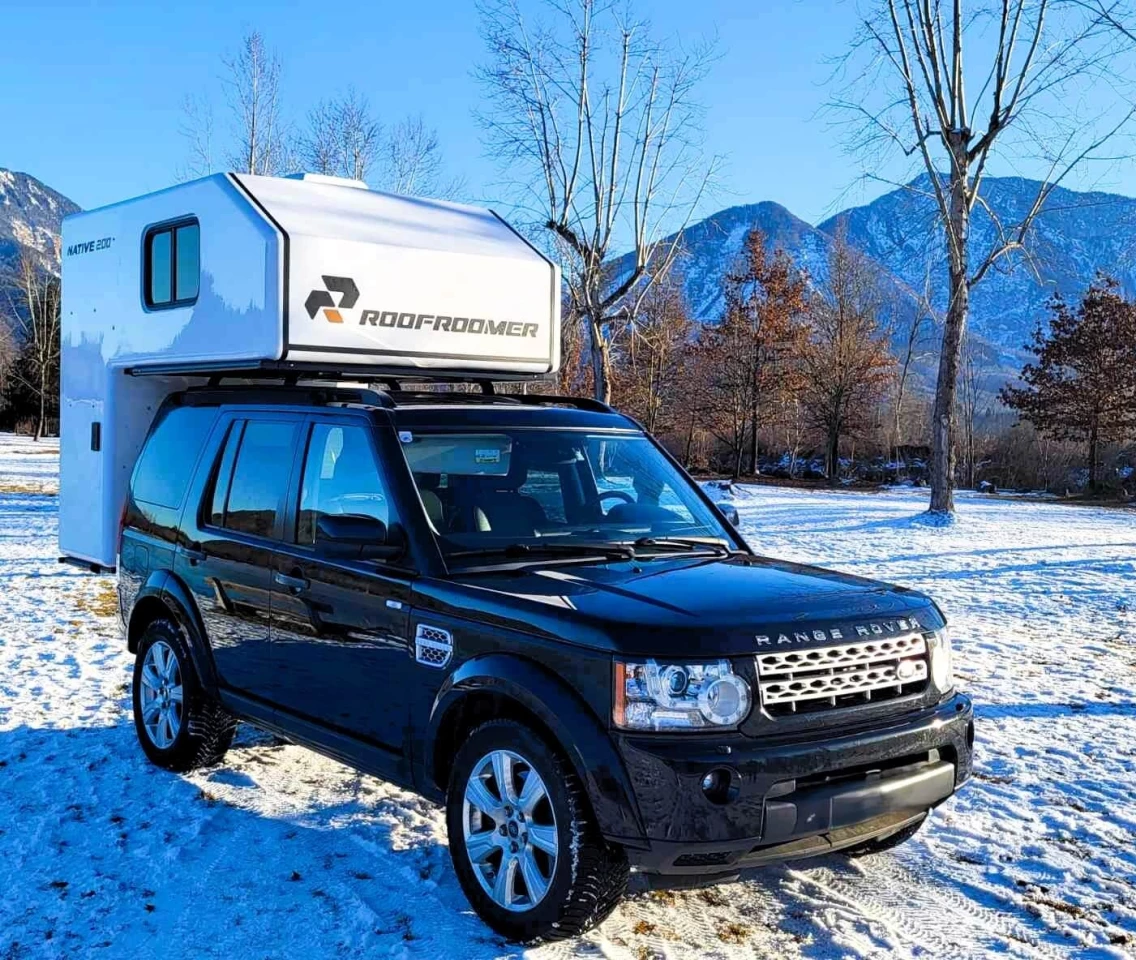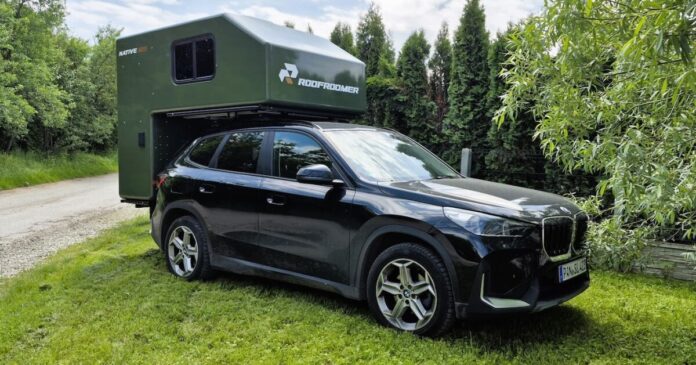I’d like the pickup camper without the pickup truck, please. Serbian RV upstart Roofroomer has exactly what you crave in its Native camper, a fiberglass elbow that reimagines automotive living. The unique L-shaped rooftop camping pod packs all hard walls with no pop-up roof or tent fabric and houses a functional kitchen-cum-bathroom to complement its roomy, over-cab double bed. It’s a vehicular mullet that’s all party and no business.
We’ve seen a few classic camper configurations whereby an RV pod clings to the back of a specific car model or style. The Toppola (Saab) comes immediately to mind, and the ToteMotel also muscles its way into our brain cells thanks to a deep dive The Autopian did just a few weeks ago. The latter model was designed for the broader station wagon market back in the 1960s.
In more recent times, we’ve seen a miniaturized, hybridized take on the concept with the Japanese-designed Toyota Prius Relax Cabin and a more outdoorsy, 4×4 spin with the American-built Backwoods Camper. While we’ve only seen the latter mounted to a two-door Jeep Wrangler, the Oregonian builder says the 500-lb (227-kg) module is designed to work with more SUVs than not.
Roofroomer
Roofroomer enters the space with greater ambitions than those past pioneers of daily-driver RVing, billing its new Native series as the first to market that works universally with a full spectrum of vehicles: SUVs, crossovers, vans, hatchbacks and station wagons (i.e. estates). The camper just requires a one- or two-box vehicle with a hatchback or tailgate. A three-box body (e.g. a conventional sedan) won’t work with the Native shape.
Of course, the vehicle in question will need to meet a few other requirements, like having a hitch receiver capable of carrying 85 kg (188 lb), a ball hitch installed, and a pair of roof crossbars with a 75-kg (165-lb) load capacity or higher. Native units start at just 110 kg (243 lb), according to Roofroomer, less than half of what the Backwoods Camper weighs, helping make them a more universal solution compatible with smaller vehicles like the BMW X1 pictured up top. The Native doesn’t require any permanent modification to the vehicle, and beyond basic crossbars and a ball hitch, it doesn’t involve any special mounting hardware, either.

Roofroomer
The Native installation process is similar to that of a pickup camper – the camper stands on its own set of height-adjustable legs, and the vehicle backs up right below it. The user lowers the camper onto the vehicle and secures the camper-integrated aluminum frame underpinning the alcove to the vehicle’s crossbars via four mounting brackets, much like a rooftop tent. They then lower the coupler emerging from the Native’s subfloor aluminum frame and attach it to the ball hitch, in a similar way to hitching up a trailer. The Native is then properly secured, its weight evenly distributed and supported.
Of course, the Native loses a lot of lower-level volume in comparison to a pickup camper, so you don’t get a dining lounge or a full kitchen. Roofroomer has managed to squeeze the most out of the shallow space, though, turning the lower floor area into an effective wet bathroom-kitchen.
Upon stepping inside through the full-height entry door, the kitchen counter with sink basin is located to the right. Campers can use a small cooking stove on the counter, though given how tight the space is, it might ultimately be easier and safer to cook outside.

Roofroomer
To the left, Roofroomer makes room for a corner shower with a hanging privacy curtain, mat and shelves for toiletries. It includes a shower kit that doubles as a functional faucet for the sink but does not include any form of onboard water storage so that buyers have the flexibility to carry how much they need, either in the Native camper or in the tow vehicle.
Roofroomer treats the drainage system similarly, integrating a floor drain and piped sink basin drain through the floor of the unit. Campers can then let it drain to the ground, if feasible, or use a canister as a gray water tank. The drain outlets feature 40-mm valves for attaching a hose to better manage and direct the drainage flow or connect to a campsite drainage hookup.
Campers can, of course, bring their own portable toilet to use behind the privacy curtain. Although if I were using a toilet or shower in this compact of a unit, I’d prefer to be the only one inside the camper at the time. I believe others would prefer that as well.

Roofroomer
In addition to holding provisions for campers’ convenience, the aluminum shelving inside serves as reinforcement for the camper structure, not so different from larger campers in which interior furnishings and joinery are part of the structural bones.
The larger Native 200 model is aimed at bigger SUVs and vans and has a rear wall that measures 203 cm (6.8 feet) in total height, offering ample standing room inside for the average adult. The Native 185 is slimmed down for smaller crossovers and hatchbacks and has a shorter 188-cm (6.2-foot) rear wall that will make the ceiling a little too low for taller folks to stand up straight but should still be practical enough for nearly everyone, even if it means a slight crouch.

The Native 200 alcove offers a generous super-queen sleeping area measuring 79 x 63 in (200 x 160 cm), while the Native 185 has a still-roomy 75 x 55-in (190 x 140-cm) space. Both models come with mattresses as part of the standard package.
The Native campers do not come with a ladder but should be easy enough to high-step into or access via small step ladder, stool, or even a sturdy cargo box or cooler.
The Native 185 starts at €8,690 (approx. US$10,000) and the Native 200 at €8,990 ($10,375) when ordered and picked up from Roofroomer’s factory in Serbia. Those numbers are pre-VAT. Roofroomer is also working to set up distribution in major markets around Europe, including Benelux, Scandinavia and the UK, and has already established partners in Austria and Spain.
Source: Roofroomer


